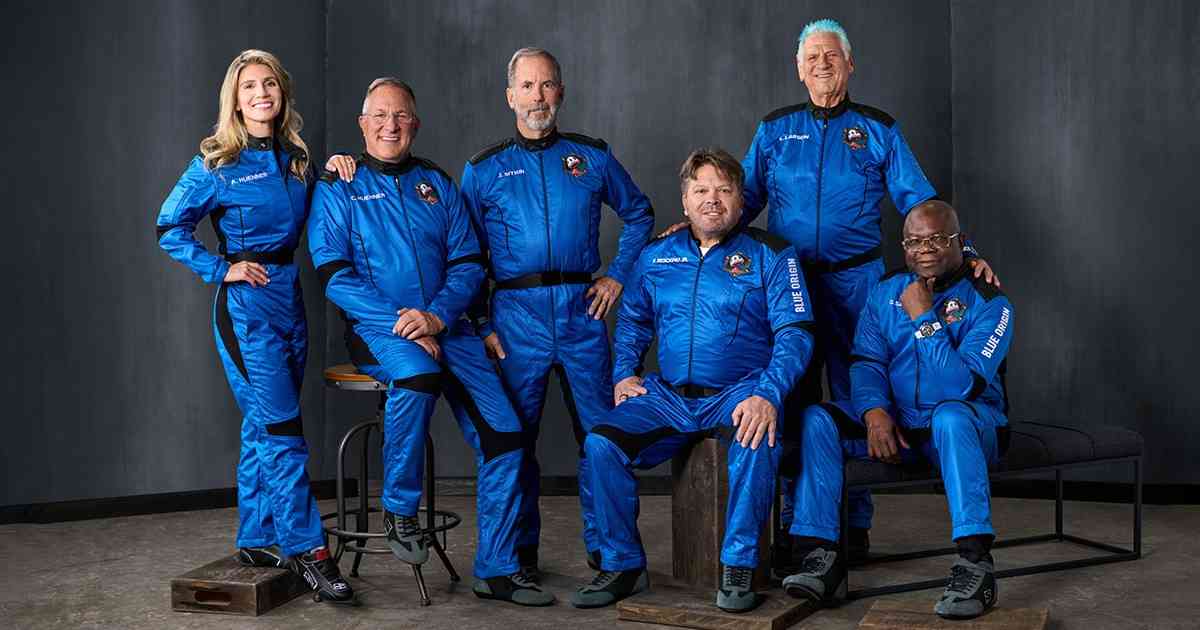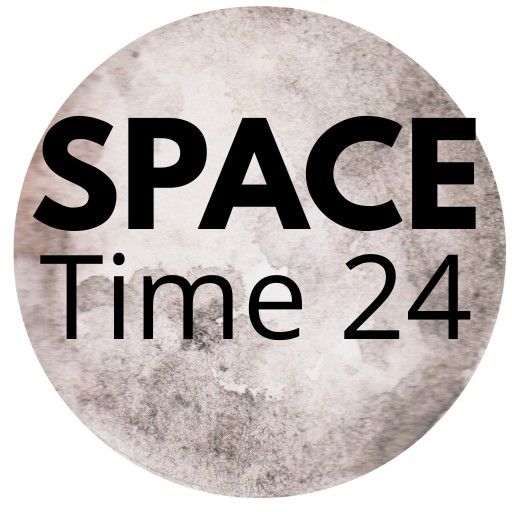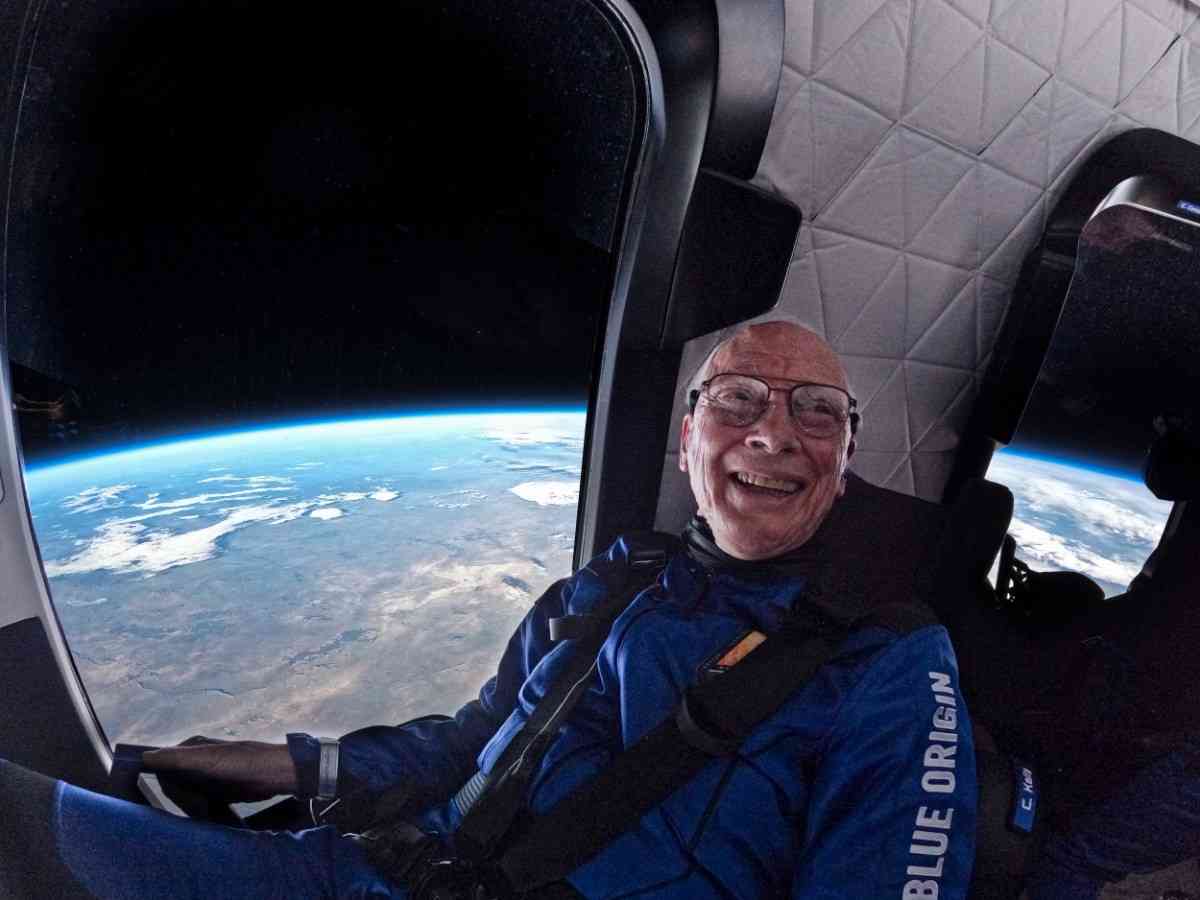Blue Origin Scrubs NS-33 suborbital space tourism flight due to high winds in West Texas. Learn why the mission was scrubbed, the crew involved, and what comes next.5

Blue Origin Scrubs NS-33 Flight Over Weather Concerns
West Texas | June 21, 2025 —
Blue Origin has postponed its much-anticipated NS-33 mission, which was set to carry six private citizens on a suborbital space tourism flight from Launch Site One in West Texas. The decision was made due to unfavorable high-altitude wind conditions, which posed risks during launch and recovery operations.
The flight was originally scheduled for Saturday morning at 8:30 a.m. CDT (13:30 UTC). No new launch date has been confirmed yet.
About the NS-33 Mission
The NS-33 mission marks the 33rd flight of the New Shepard reusable launch system and the 7th crewed commercial mission. New Shepard is designed to fly above the Kármán line (100 km), allowing passengers to experience weightlessness and view Earth from the edge of space for several minutes before returning safely via parachute landing.
Crew Members on NS-33
The NS-33 flight was to carry six passengers from diverse backgrounds:
- Mason Angel – Venture capitalist and founder of Industrious Ventures
- Sylvain Chiron – French entrepreneur and founder of Brasserie du Mont-Blanc
- Carol Schaller – Retired accountant and lifelong space enthusiast
- Gopi Thotakura – Indian aviator and wellness entrepreneur
- Ed Dwight – Former U.S. Air Force captain and America’s first Black astronaut candidate
- Kenneth L. Hess – Software engineer, entrepreneur, and space education advocate
This mission is especially notable as it includes Ed Dwight, who was selected by President John F. Kennedy for astronaut training in the 1960s but never went to space. NS-33 would mark his historic first flight.
Why Was the Launch Delayed?
According to Blue Origin, high winds in the upper atmosphere made flight conditions unsafe. In suborbital flights, precision during both boost and descent phases is critical, and strong winds can cause trajectory deviations and risk parachute deployment safety.
A spokesperson stated on Blue Origin Scrubs NS-33:
“Out of an abundance of caution for the crew and the recovery team, we are standing down from today’s launch and will reschedule once conditions improve.”
What Happens Next?
Blue Origin has not provided a specific new launch date, but the next attempt is expected in the coming days, pending favorable weather. The NS-33 vehicle and systems reportedly remain in nominal condition.
The launch will be livestreamed on BlueOrigin.com once rescheduled.
Blue Origin and the Future of Space Tourism
Founded by Jeff Bezos, Blue Origin is one of the leading companies in the growing commercial spaceflight industry. With New Shepard, it provides short-duration suborbital flights to the edge of space, targeting researchers, educators, and private tourists.
So far, Blue Origin has conducted over a dozen successful human spaceflights, reinforcing the role of reusable rocket technology in making space more accessible.
Conclusion
The delay of the NS-33 flight highlights the challenges of spaceflight—even in commercial tourism. While weather can be unpredictable, safety remains the top priority. As the spaceflight window reopens in the coming days, the world will be watching to see this diverse crew make their journey to the stars.
Stay tuned for updates on the rescheduled NS-33 launch date and coverage of Blue Origin’s next steps in civilian space travel.
News Source:-
https://x.com/blueorigin/status/1936412783911772252?t=y8VaEAiKsRY6tMesK9-JcQ&s=19
FAQ: Blue Origin Scrubs NS-33 Suborbital Spaceflight
1. What is the NS-33 mission by Blue Origin?
Blue Origin Scrubs NS-33 is the 33rd mission of Blue Origin’s New Shepard suborbital rocket and its 7th crewed commercial flight, aimed at taking six private individuals above the Kármán line (100 km) for a few minutes of weightlessness and space viewing.
2. Why was the NS-33 mission postponed?
The launch was scrubbed due to high winds at high altitude over Launch Site One in West Texas. Strong winds can affect the rocket’s stability and the safe return of its capsule, especially during parachute deployment.
3. When was the NS-33 mission supposed to launch?
The launch was scheduled for Blue Origin Scrubs NS-33 was Saturday, June 21, 2025, with the window opening at 8:30 a.m. CDT (13:30 UTC).
4. Who are the passengers on NS-33?
The six passengers on the Blue Origin Scrubs NS-33 mission are:
- Ed Dwight – Former USAF captain, first Black astronaut candidate
- Gopi Thotakura – Indian pilot and wellness entrepreneur
- Mason Angel – American investor
- Carol Schaller – Retired accountant and space fan
- Kenneth L. Hess – Entrepreneur and educator
- Sylvain Chiron – French brewery founder
5. Was the rocket damaged or delayed for technical reasons?
No. The mission was postponed solely due to weather conditions. Blue Origin confirmed that the rocket and all systems were in nominal condition.
6. Has a new launch date for NS-33 been announced?
As of now, no new launch date has been provided. Blue Origin is monitoring weather conditions and will reschedule once it is safe to launch.
7. Where will the NS-33 flight launch from?
The mission will launch from Launch Site One, Blue Origin’s private spaceport near Van Horn, West Texas.
8. What makes this NS-33 mission significant?
- Ed Dwight’s participation makes this flight historic, as he was selected in the 1960s but never flew.
- It’s part of Blue Origin’s effort to expand civilian space tourism.
- All passengers are non-professional civilians representing various countries and backgrounds.
9. How long does a New Shepard flight last?
The entire suborbital flight typically lasts about 11 minutes, including several minutes of microgravity above the Kármán line and a parachute-assisted landing.
10. How can I watch the launch when it happens?
Blue Origin will provide a livestream on their official website (BlueOrigin.com) and YouTube channel, beginning approximately 30 minutes before liftoff.

